| PZ Home |
|
| The Anthropometric Data |
|
| Validation |
|
| Customers, Uses |
|
| Installation |
|
| BUY |
|

There are two versions of PeopleSize 2020 - Easy and Professional.
Both versions use the same dataset and the same visual interface You would choose the Pro version to have 3 power facilities:
You can mix proportions of the measured populations, to have a
user group that represents all the users of your design. For
example you might apply sales demographics data to define the user
group, perhaps something international like this: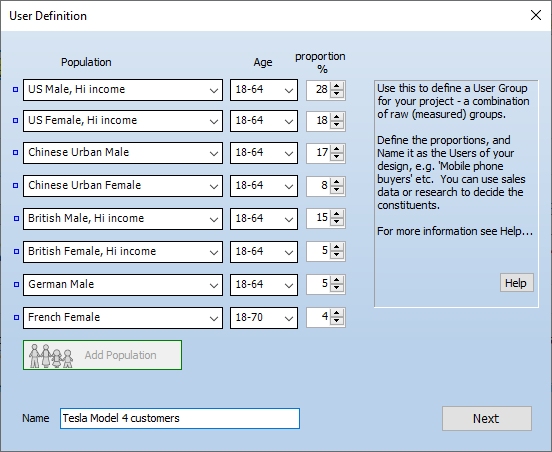 Then PeopleSize always calculates percentiles of that group. It does this iteratively, which is more accurate than a 'composite distribution'. This is important for addressing the issue of exactly who will be using your design - it's unlikely to be 'everyone' or an 'average person'. This means you can talk accurately about the sizes of your intended customers. At this point you would have an output like this: |
||
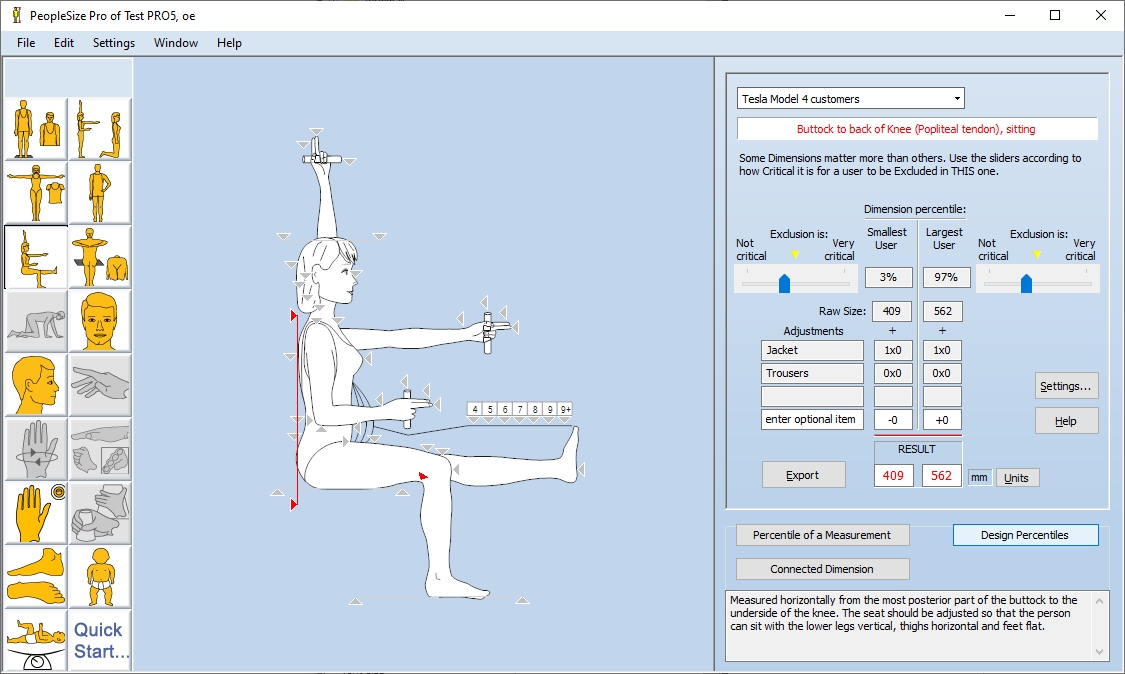 Note that, depending on the data available, there will be some dimensions missing for your particular mix of populations.
Note that, depending on the data available, there will be some dimensions missing for your particular mix of populations. |
2. Design Percentiles: fit the percentage of People that you intend
PeopleSize Pro has a 'Monte Carlo Modelling' engine, which calculates the proportion of users who will fit a design in several different dimensions at once.
This matters because people's proportions vary. So every extra dimension that your design has to fit increases the percentage of 'excluded' users. For example, setting 98th percentile stature excludes 2% of users; they stay excluded, whatever else you specify.
Then 98th buttock-leg length excludes some extra people, because some people with 98th %ile stature are more than 98th %ile in buttock-leg length. The exclusions accumulate with each dimension.
For example a might have to fit drivers in these dimensions: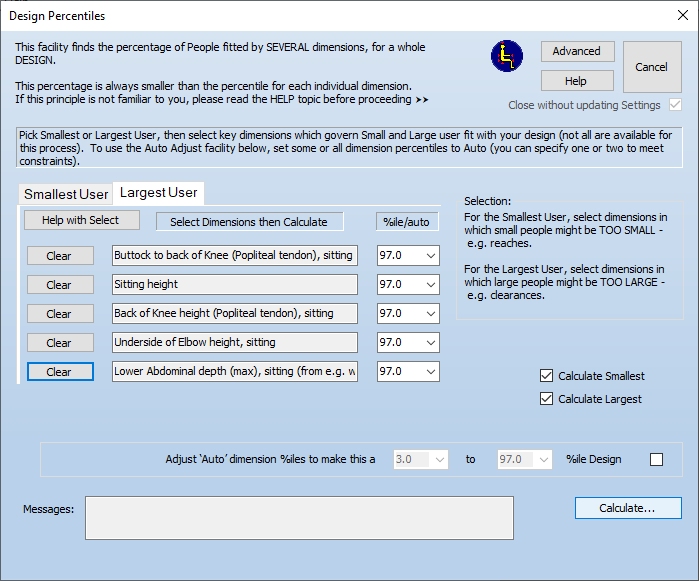 In the past, it would commonly have been assumed that these dimensions would fit 97% of Users. But when we run the calculation we get: 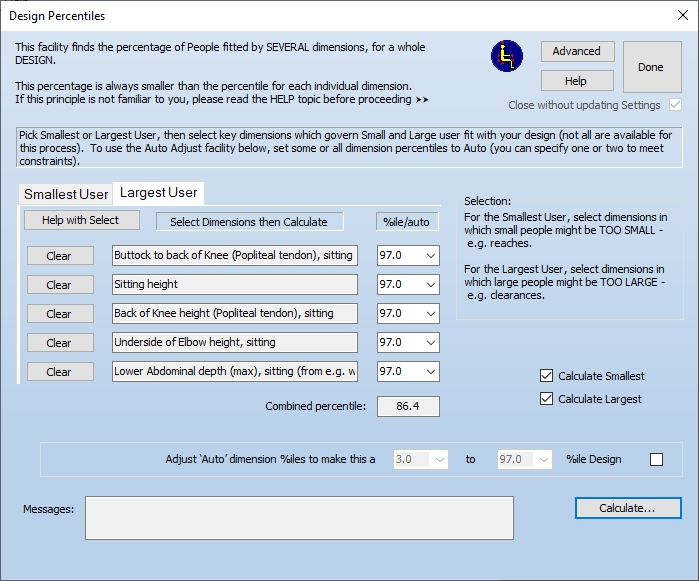 Only 86.4%!
Only 86.4%!So to fit 97% of larger people altogether, you have to set these individual dimensions to a more extreme value. PeopleSize offers to find such a value for you, with the Auto function. It's a tricky calculation, because some dimensions, but only some, tend to be big or small in the same person - like stature and leg length. In that case, the leg length limit doesn't add many exclusions. Other dimensions vary more, like stature and waist circumference, in which case the waist criterion adds quite a lot of exclusions. Consequently, working out the overall percentile for a number of dimensions is very difficult, and needs Monte Carlo Modelling. |
3. Connected Dimension: when the start of one dimension depends on the size of another
This feature is for situations where the start point of one dimension depends on the size of another dimension. Often this happens when a design is adjustable in some way, for example if a car seat is adjusted to suit a
small eye height, what is the range of leg lengths? 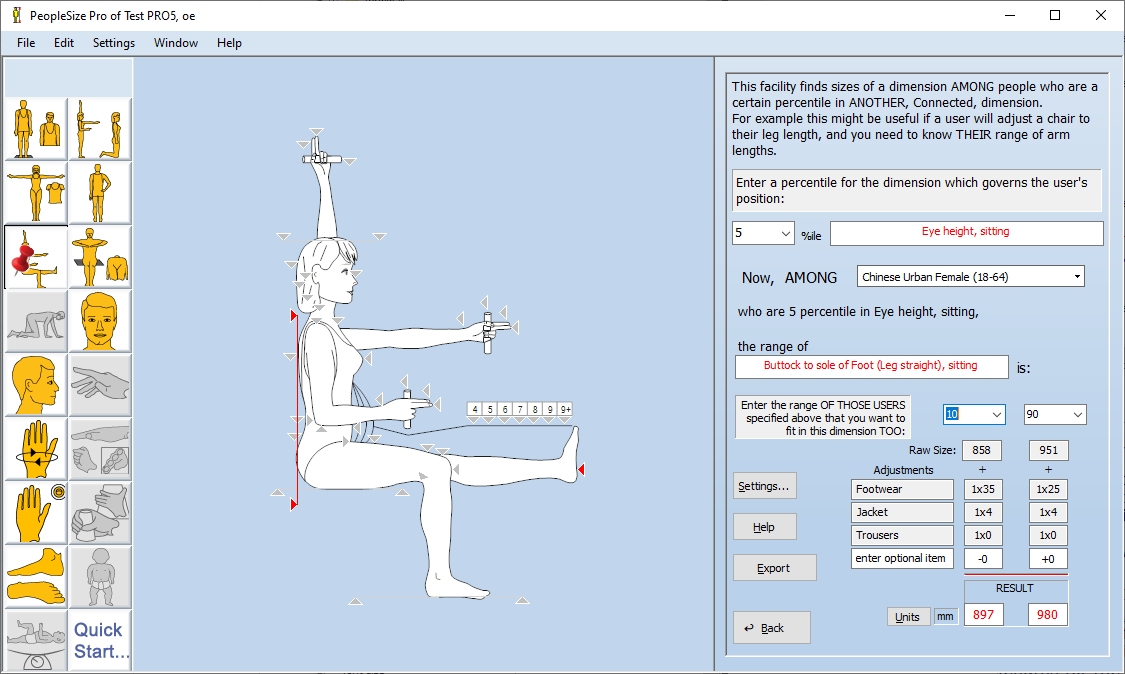 In this example, we see that among Chinese women who are 5th percentile sitting eye height, there is a range of just over 80mm in leg length to accommodate 80% of them. This would guide car seat mechanism design and perhaps other aspects such as steering column, gearshift and door handle placement. |
